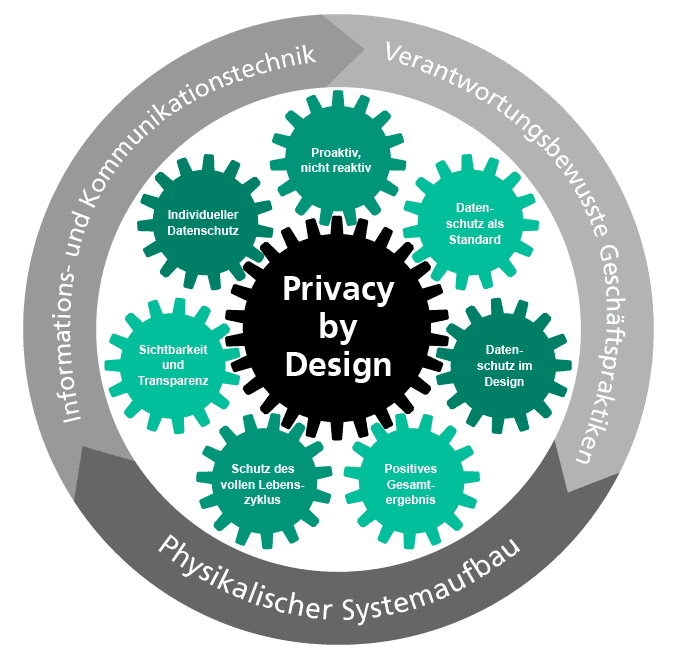
Privacy by Design: The 7 Foundational Principles
Privacy by Design (PbD) describes a design concept for creating technologies in a way to protect the privacy of users. The European Data Protection Regulation (EU-GDPR) demands PbD for all technologies that process personal identifiable information (GDPR Article 25), has greatly increased the interest in the topic.
The idea behind Privacy by Design has been discussed in privacy community since the 1970s. However, the terms were primarily coined by Ann Cavoukian in her publication "Privacy by Design: The 7 Foundational Principles" from 2009 (Cavoukian, Privacy by Design, 2009):
1. Proactive not Reactive; Preventative not Remedial
The Privacy by Design (PbD) approach is characterized by proactive rather than reactive measures. It anticipates and prevents privacy invasive events before they happen. PbD does not wait for privacy risks to materialize, nor does it offer remedies for resolving privacy infractions once they have occurred - it aims to prevent them from occurring. In short, Privacy by Design comes before-the-fact, not after.
2. Privacy as the Default Setting
We can all be certain of one thing — the default rules! Privacy by Design seeks to deliver the maximum degree of privacy by ensuring that personal data are automatically protected in any given IT system or business practice. If an individual does nothing, their privacy still remains intact. No action is required on the part of the individual to protect their privacy — it is built into the system, by default.
3. Privacy Embedded into Design
Privacy by Design is embedded into the design and architecture of IT systems and business practices. It is not bolted on as an add-on, after the fact. The result is that privacy becomes an essential component of the core functionality being delivered. Privacy is integral to the system, without diminishing functionality.
4. Full Functionality - Positive-Sum, not Zero-Sum
Privacy by Design seeks to accommodate all legitimate interests and objectives in a positive-sum “win-win” manner, not through a dated, zero-sum approach, where unnecessary trade-offs are made. Privacy by Design avoids the pretense of false dichotomies, such as privacy vs. security, demonstrating that it is possible to have both.
5. End-to-End Security - Full Lifecycle Protection
Privacy by Design, having been embedded into the system prior to the first element of information being collected, extends securely throughout the entire lifecycle of the data involved — strong security measures are essential to privacy, from start to finish. This ensures that all data are securely retained, and then securely destroyed at the end of the process, in a timely fashion. Thus, Privacy by Design ensures cradle to grave, secure lifecycle management of information, end-to-end.
6. Visibility and Transparency - Keep it Open
Privacy by Design seeks to assure all stakeholders that whatever the business practice or technology involved, it is in fact, operating according to the stated promises and objectives, subject to independent verification. Its component parts and operations remain visible and transparent, to users and providers alike. Remember, trust but verify.
7. Respect for User Privacy - Keep it User-Centric
Above all, Privacy by Design requires architects and operators to keep the interests of the individual uppermost by offering such measures as strong privacy defaults, appropriate notice, and empowering user-friendly options. Keep it user-centric.
 Fraunhofer Institute of Optronics, System Technologies and Image Exploitation IOSB
Fraunhofer Institute of Optronics, System Technologies and Image Exploitation IOSB 